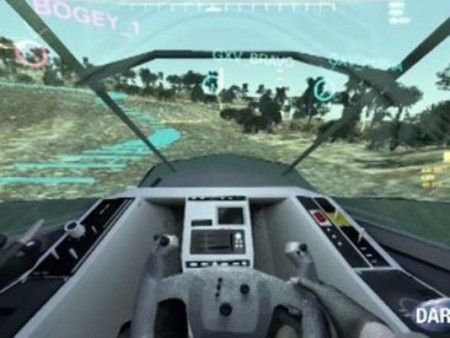February 19, 2016 – DARPA, the Defense Advanced Research Projects Agency, is an incubator for exploring and developing new technologies. Established in 1958 in response to the Soviet Union’s launch of Sputnik, its research focuses on space, transportation, energy, medicine, materials, robotics, cyber-security, big data, quantum computing, and artificial intelligence.
Among the many projects it has funded you can find advanced biometric technology, new materials for construction and defense, self-sustaining robots, field robots, drones of countless description, exoskeletons and enhanced endurance suits, synthetic blood, putty that heals bone fractures, hybrid submarine airplanes, battlefield simulators, smart bullets, and neural and neuromorphic technologies and interfaces.
Part of DARPA’s mandate is to look at the future and make what seems impossible become a reality. And one of those realities is virtual. Honeywell is the company and the technology is an augmented virtual reality windshield for ground transportation. To achieve this the company is using its avionics flight deck display technology designed for the Boeing 777. Called “near-to-eye” the technology allows an operator of a vehicle to see a virtual representation of what’s in front of them even in limited visibility. For 777 pilots it means seeing taxiways and runways regardless of visual conditions. If the pilot is dealing with an unfamiliar destination he or she can immediately see the layout in a virtual windshield display in real time.
For ground vehicles Honeywell is building a wrap-around windshield that provides driver and passengers with contextual awareness using low-resolution imaging overlying the actual field of view. Using it a driver can plot optimal routing in difficult terrain. The challenge is to manage the huge amounts of visual data and convert it to a heads-up display. If successful it brings into question whether windows will even be necessary in future vehicles.









